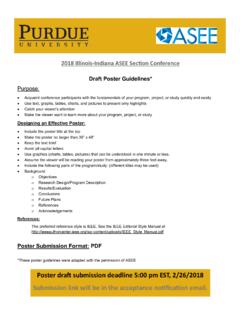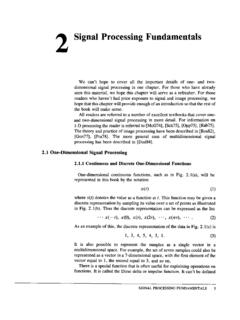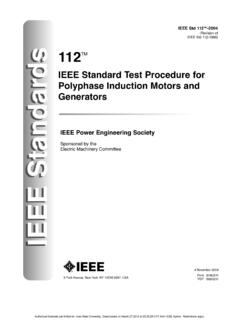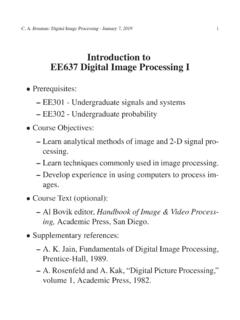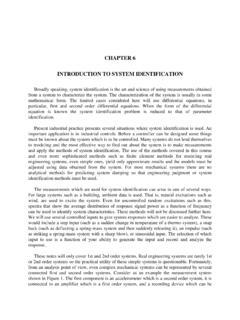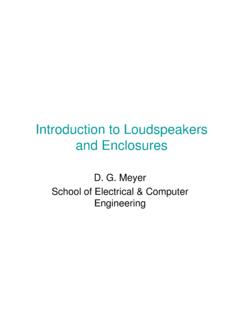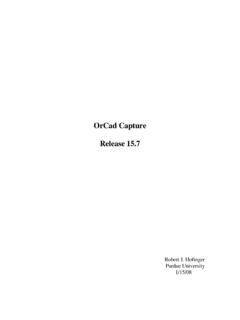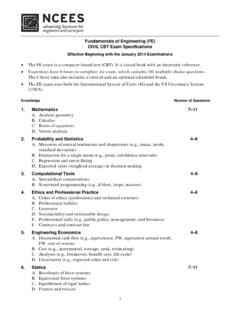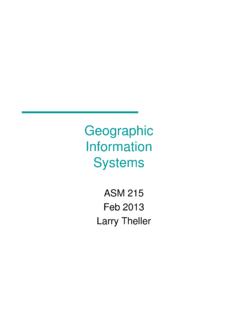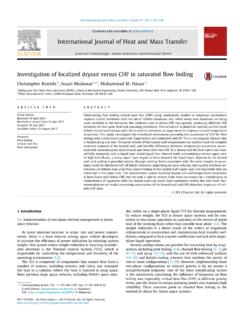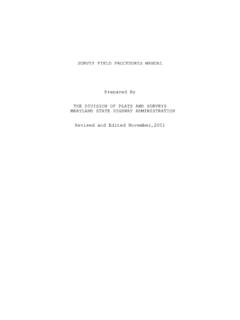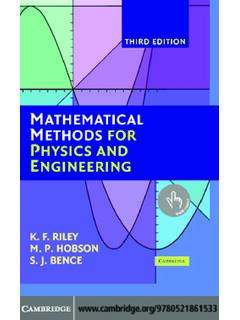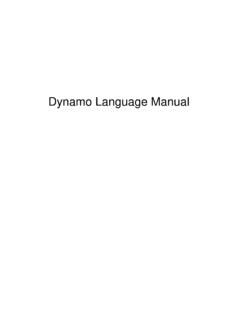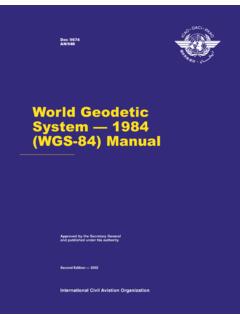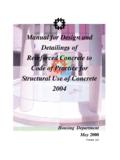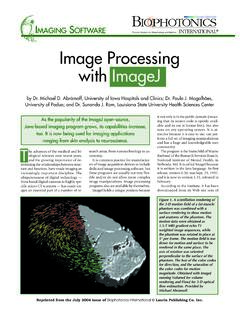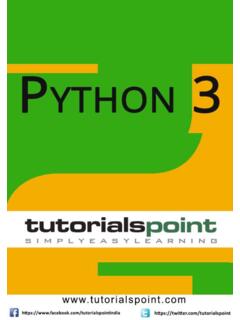Transcription of E E S - Purdue University
1 E E S Engineering Equation Solver for Microsoft Windows Operating Systems Commercial and Professional Versions F-Chart Software 4406 Fox Bluff Rd Middleton, WI 53562 Phone: 608-836-8531 FAX: 608-836-8536 Copyright 1992-2000 by Klein All rights reserved. The authors make no guarantee that the program is free from errors or that the results produced with it will be free of errors and assume no responsibility or liability for the accuracy of the program or for the results which may come from its use. EES was compiled with DELPHI 5 by Borland Registration Number_____ ALL CORRESPONDENCE MUST INCLUDE THE REGISTRATION NUMBER E E S Engineering Equation Solver for Microsoft Windows Operating Systems F-Chart Software 4406 Fox Bluff Rd Middleton, WI 53562 Phone: 608-836-8531 FAX: 608-836-8536 ii Table of Contents 1 Chapter 1: Getting 5 Installing EES on your 5 Starting EES.
2 5 Background 6 An Example Thermodynamics 9 Chapter 2: EES 19 General Information .. 19 Equations Window .. 21 Formatted Equations Window .. 24 Solution Window .. 27 Arrays 29 Residuals Window .. 31 Parametric Table Window .. 33 Lookup Table Window .. 37 Diagram Window .. 39 Plot Windows .. 49 Debug 55 Chapter 3: Menu 59 The File Menu .. 59 The Edit Menu .. 66 The Search Menu .. 69 The Options Menu .. 70 The Calculate Menu .. 85 The Tables Menu .. 91 The Plot Menu .. 99 The Windows 108 The Help Menu .. 110 The Textbook Menu .. 111 Chapter 4: Built-in 113 Mathematical Functions.
3 113 String 122 Thermophysical Property 123 Using Lookup Files and the Lookup Table .. 131 The $OpenLookup and $SaveLookup Directives .. 139 -iii- Chapter 5: EES Modules, Functions and 141 EES Functions .. 142 EES Procedures .. 144 Single-Line If Then Else Statements .. 146 Multiple-Line If Then Else Statements .. 147 GoTo Statements .. 148 Repeat Until Statements .. 148 Error 149 Modules .. 150 Library Files .. 153 $COMMON Directive .. 156 The $INCLUDE directive .. 157 The $EXPORT directive .. 158 The $IMPORT directive .. 159 Chapter 6: Compiled Functions and 161 EES Compiled Functions (.DLF Files).. 161 The PWF Example Compiled 164 EES Compiled Procedures (.FDL and .DLP Files) .. 167 Compiled Procedures with the .FDL Format - a FORTRAN 168 Compiled Procedures with the.
4 DLP Format - a Pascal Example .. 171 Multiple Files in a Single Dynamic Link Library (.DLL) .. 173 Help for Compiled 175 Chapter 7: Advanced 177 String Variables .. 177 Complex Variables .. 178 Array 182 The DUPLICATE Command .. 184 Matrix Capabilities .. 185 Using the Property 187 Integration and Differential Equations .. 188 Creating and Using Macro Files .. 199 Appendix A: Hints for Using 207 Appendix B: Numerical Methods used in 211 Solution to Algebraic 211 Blocking Equation Sets .. 215 Determination of Minimum or Maximum 216 Numerical Integration .. 217 References for Numerical Methods .. 219 Appendix C: Adding Property Data to 221 Appendix D: Example Problem 231 1 _____ Overview _____ EES (pronounced 'ease') is an acronym for Engineering Equation Solver. The basic function provided by EES is the solution of a set of algebraic equations.
5 EES can also solve differential equations, equations with complex variables, do optimization, provide linear and non-linear regression and generate publication-quality plots. Versions of EES have been developed for Apple Macintosh computers and for the Windows operating systems. This manual describes the version of EES developed for Microsoft Windows operating systems, including Windows 95/98/2000 and Windows NT 4. There are two major differences between EES and existing numerical equation-solving programs. First, EES automatically identifies and groups equations which must be solved simultaneously. This feature simplifies the process for the user and ensures that the solver will always operate at optimum efficiency. Second, EES provides many built-in mathematical and thermophysical property functions useful for engineering calculations. For example, the steam tables are implemented such that any thermodynamic property can be obtained from a built-in function call in terms of any two other properties.
6 Similar capability is provided for most organic refrigerants (including some of the new blends), ammonia, methane, carbon dioxide and many other fluids. Air tables are built-in, as are psychrometric functions and JANAF table data for many common gases. Transport properties are also provided for most of these substances. The library of mathematical and thermophysical property functions in EES is extensive, but it is not possible to anticipate every user's need. EES allows the user to enter his or her own functional relationships in three ways. First, a facility for entering and interpolating tabular data is provided so that tabular data can be directly used in the solution of the equation set. Second, the EES language supports user-written functions and procedure similar to those in Pascal and FORTRAN. EES also provides support for user-written modules, which are self-contained EES programs that can be accessed by other EES programs.
7 The functions, procedures, and modules can be saved as library files which are automatically read in when EES is started. Third, compiled functions and procedures, written in a high-level language such as Pascal, C or FORTRAN, can be dynamically-linked into EES using the dynamic link library capability incorporated into the Windows operating system. These three methods of adding functional relationships provide very powerful means of extending the capabilities of EES. 2 The motivation for EES rose out of experience in teaching mechanical engineering thermodynamics and heat transfer. To learn the material in these courses, it is necessary for the student to work problems. However, much of the time and effort required to solve problems results from looking up property information and solving the appropriate equations. Once the student is familiar with the use of property tables, further use of the tables does not contribute to the student's grasp of the subject; nor does algebra.
8 The time and effort required to do problems in the conventional manner may actually detract from learning of the subject matter by forcing the student to be concerned with the order in which the equations should be solved (which really does not matter) and by making parametric studies too laborious. Interesting practical problems that may have implicit solutions, such as those involving both thermodynamic and heat transfer considerations, are often not assigned because of their mathematical complexity. EES allows the user to concentrate more on design by freeing him or her from mundane chores. EES is particularly useful for design problems in which the effects of one or more parameters need to be determined. The program provides this capability with its Parametric Table, which is similar to a spreadsheet. The user identifies the variables that are independent by entering their values in the table cells.
9 EES will calculate the values of the dependent variables in the table. The relationship of the variables in the table can then be displayed in publication-quality plots. EES also provides capability to propagate the uncertainty of experimental data to provide uncertainty estimates of calculated variables. With EES, it is no more difficult to do design problems than it is to solve a problem for a fixed set of independent variables. EES offers the advantages of a simple set of intuitive commands that a novice can quickly learn to use for solving any algebraic problems. However, the capabilities of this program are extensive and useful to an expert as well. The large data bank of thermodynamic and transport properties built into EES is helpful in solving problems in thermodynamics, fluid mechanics, and heat transfer. EES can be used for many engineering applications; it is ideally suited for instruction in mechanical engineering courses and for the practicing engineer faced with the need for solving practical problems.
10 The remainder of this manual is organized into seven chapters and five appendices. A new user should read Chapter 1 which illustrates the solution of a simple problem from start to finish. Chapter 2 provides specific information on the various functions and controls in each of the EES windows. Chapter 3 is a reference section that provides detailed information for each menu command. Chapter 4 describes the built-in mathematical and thermophysical property functions and the use of the Lookup Table for entering tabular data. Chapter 5 provides instructions for writing EES functions, procedures and modules and saving them in 3 Library files. Chapter 6 describes how compiled functions and procedures, written as Windows dynamic-link library (DLL) routines, can be integrated with EES. Chapter 7 describes a number of advanced features in EES such as the use of string, complex and array variables, the solution of simultaneous differential and algebraic equations, and property plots.
